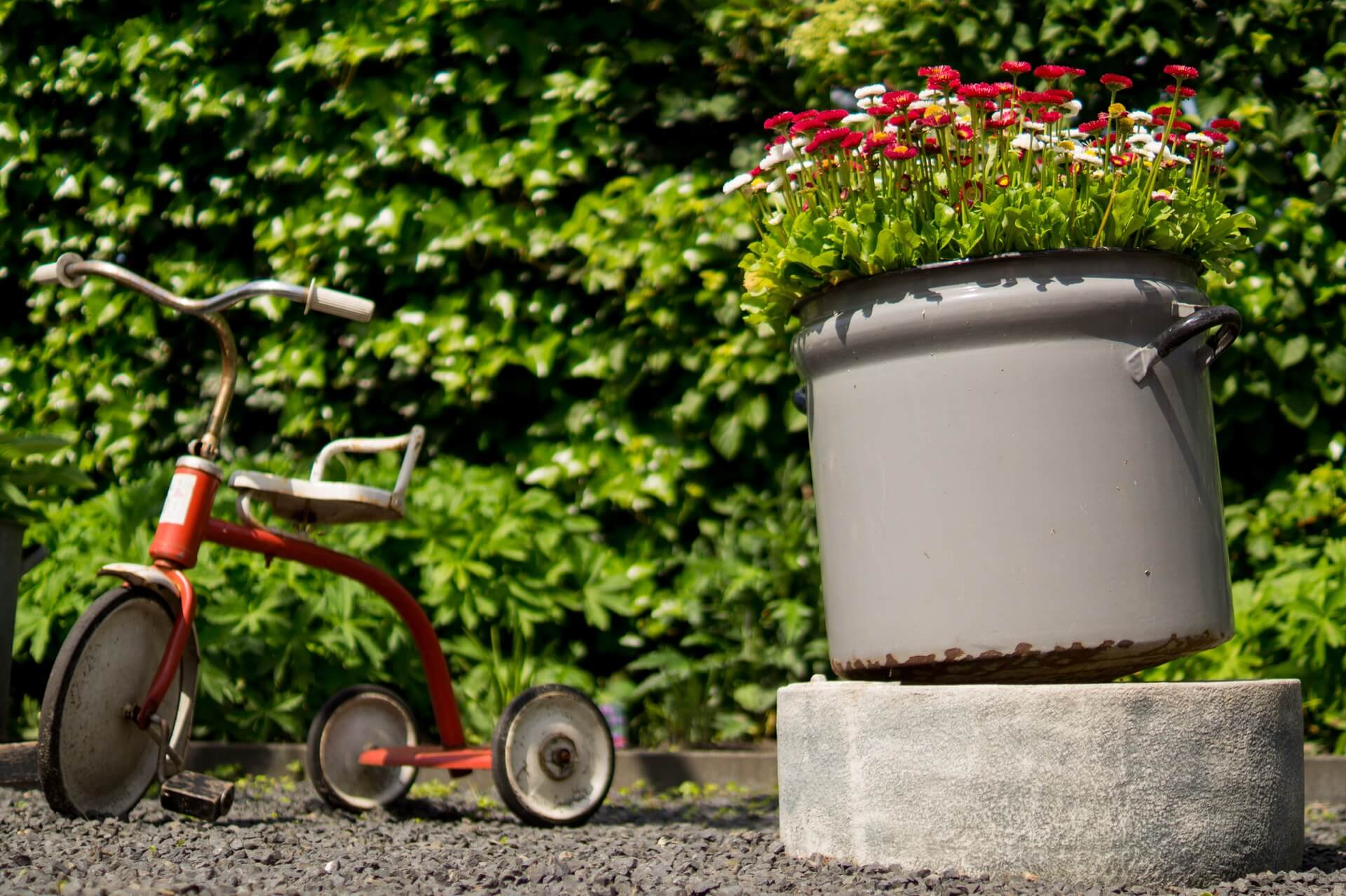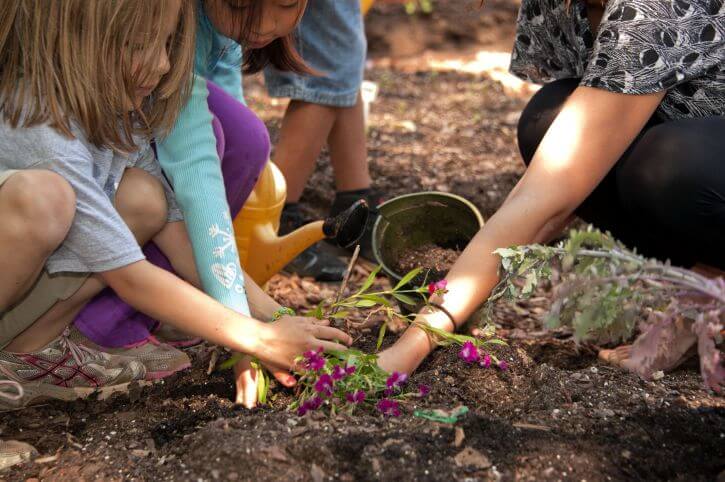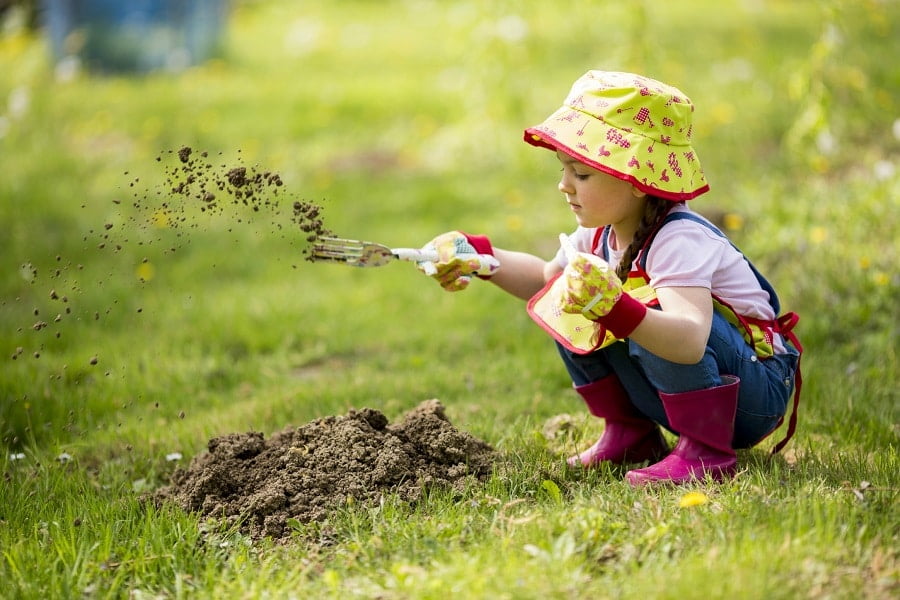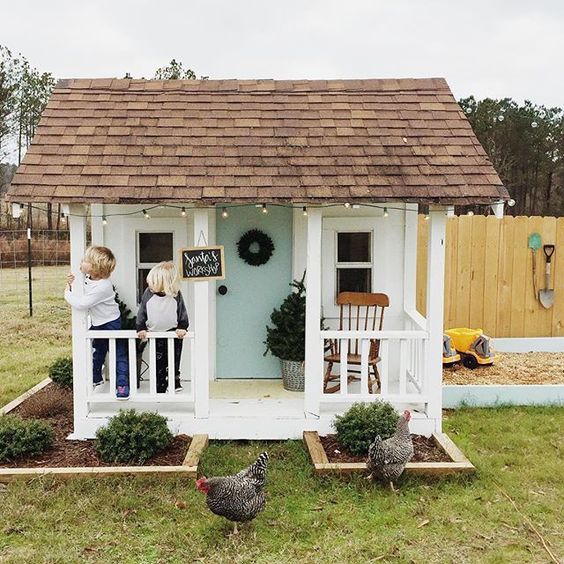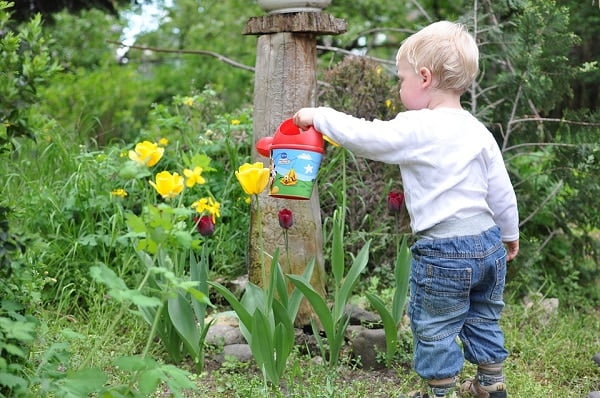Gardening is a wonderful occupation. Basically, you help nature reborn. In exchange, you receive nurture and beauty. There is no reason why not to pass the knowledge of growing a garden out of a hand full of seeds on to children. They might be small enough to understand the world through games and play time. However, this is the time when you can plant a seed in their mind. Eventually, it will grow into a healthy hobby by the time they are young adults. So, if you really love your connection to nature and you aspire to instill your passion to kids, then you should consider creating some school gardening programs.
Opening a school in your backyard will require a lot of efforts and time. However, the results might be more fun and be fulfilling for both parties than you expected. The fruit of your work will be noticeable during and after your classes. Until these moments, let’s see what you need to do to open some truly inspiring school gardening programs.
1. Benefits of School Gardening Programs
Before starting our journey into the wonders of molding the mind of youngsters, we should hear the school garden benefits. This image might give you the necessary boost to overcome challenges and see your dream come true.
So, how can kids benefit from such an initiative? First off, gardening is one practical topic. This is a really useful body of knowledge that can help people throughout their entire life. Not to mention that gardening can turn into farming which kids can choose as their main career.
Moreover, the classes will be a new experience for everyone. There are a few occasions that a real school can take advantage of to take its kids out for a lesson. As such, young minds can be stuck in the confinement of a classroom.
However, your classes will assure them that being enclosed between four walls is not a prerequisite for an educational environment. On the contrary, they will learn a lot of new things that might look magical to them in the open air.
Another advantage of opening a school garden is that you will direct kids towards healthy eating. They have more chances to come to see vegetables and legumes from a different perspective. Once they see how their food grows, they might end up appreciating fresh nutrition more.
2. Get Approval from a Local Institution
If you want to make your school gardening programs official, you can collaborate with a local educational institution. You should make a case for such a novel school topic. However, it is not difficult to see the perks of cultivating kids with a sense of nature. To make your arguments more solid, you should look for scientific papers. These works harness the power of science to sustain the beneficial side of gardening.
Before giving your presentation, you can talk to teachers and parents. Convince them of the advantages their kids will enjoy thanks to your school gardening programs. Once they’re on board, you can invite them to your presentation. They can act as supporters for this initiative and defend your case before school administration.
Afterward, get in contact with school officials, such as administrators or even funders. Schedule a meeting and deliver them the exciting news!
3. Decide Location
Once you receive the green light from parents and school, it is time to decide each detail of your school gardening programs. First off, you should identify the ideal location. You might be thinking of your personal garden. However, what about other options?
The school and other parents can offer some good soil for this project. The main matter of concern here is that all kids should find it easy to reach the garden. If the location is too far away, then distance might become an obstacle for your pupils. Therefore, you should make sure that your garden is accessible to anyone.
4. Decide the Design of Your Garden
There are several ways to organize a garden for the benefit of students. You can go for direct planting, raised beds, straw bale gardening or container gardening. Out of these four, three of them offer the option for raised vegetable gardens, delimitation, and enclosure.
This might come in handy for several reasons. It is an ideal option for each child to receive his or her own planting spot. Moreover, raised beds are ideal for kids with disabilities, and the plants are more protected against damage, especially foot traffic.
The best way to ensure that you will not overlook anything is to draw a sketch. Decide the dimensions of your beds, places for equipment, compost, irrigation systems, and so on. The end result will prove to be handy even later when you want to consult a list of technical aspects of your garden for further adjustments.
At this point, when you have a broad picture of your school garden, it is best to decide a maintenance schedule as well. Calculate the days and appoint responsible people or even children to take care of repetitive chores. These can be soil preparation, watering, weeding, composting, and others.
5. Choose the Plants for Educational Purposes
This is the moment when you can start deciding what exactly to teach your pupils. Primarily, you can make sure your school gardening programs will initiate the minds into clean eating. Therefore, you should consider vegetables, fruits, legumes, and herbs for adequate nutrition.
On the other hand, you don’t want to overlook the aesthetic side of gardening either. Flowers have been a consistent part of the artistic side of the world for ages. Be it literature, sculpture, painting, music or poetry, nature never ceased to amaze people and encourage them to summon their unique inner self. As such, you should definitely include some beautiful corollas in your curriculum.
Moreover, it is best to start a harmonious connection with the medium. The best topics for your school can be the plants that thrive best in your regions. You can consult the USDA Plant Hardiness Zone map to find out what your best choices are depending on the local climate.
6. Respect Each Season
Even though some seasons are more tolerant of gardening chores, it doesn’t mean that some are lesser than the others. A skillful gardener knows the importance of each period of the year and cares for plants from the beginning until their harvest.
As such, your pupils should learn the utilities of each season. Plan beforehand the ideal day of planting the seeds for your lessons. For instance, the spring garden should be decided in January. Moreover, you should consider whether you want your pupils to start with seeds or started plants from the local market.
When it comes to a comprehensive experience, you should take into consideration the necessary preps for seeds. Some plants need to grow indoors even several months before they get strong enough for outdoor conditions.
However, even though this idea requires more efforts than stated plants, it is an extremely educational experience. Children will have the chance to see the entire germination process live. This detail needs advanced planning. Otherwise, pupils might miss on some essential lessons by mistake.
7. Obtain Financial Support
Gardening requires a lot of material on top of an entire set of tools for each child. Therefore, you should consider asking for help with your project. There are several ways to do that. First off, enchant the parents with the opportunities gardening opens for their kids. They might be willing to donate some financial aid or their long-forgotten gardening tools in their attic.
Secondly, there can be some local youth garden grants. These would be more than happy to support such an outdoor educational project financially. Do your research and make sure you discover all the opportunities you have.
Moreover, you can turn this step into a fun experience. Kids will be thrilled at the idea of organizing a fundraiser. It is a great opportunity for them to develop their management skills. Some themes for this kind of event might be a plant sale, garden dinner, craft sale, silent auction or others.
8. Teach Kids to Appreciate Insects
You can’t start gardening without the presence of insects. These are in perfect synergy, and they can help each other. For instance, bees are an important part of the plant growing magic as they take care of pollinating.
Moreover, earthworms are usually seen as unwanted creatures. However, they do a great work aerating the soil and improving its structure. You also want praying mantis, lacewings, and ladybugs around your garden. These protect plants against all kinds of predators.
Nonetheless, there are also insects that are eating their way through your garden. If leaves appear with large holes in them, then there are chances that the plants fell victim to garden pests. Since pesticides are toxic to the environment, you should teach your pupils how to remove threats in the right way.
For this lesson, you can plan different activities such as handpicking insect eggs from plants. Kids will also enjoy building and placing insect traps around the garden.
Final Word
Gardening is a useful skill that will help anyone throughout their entire life. The sooner kids pick up such trade secrets, the better this knowledge will serve them later. By serving fun school gardening programs with a smile on your face in the open air, you can turn these lessons into pleasant educational experiences. This project is definitely to the best benefit of pupils. Therefore, if you have this desire to organize such planning, you should do your best to make this happen.
This experience will reward you as well. It is always a wonderful thing seeing your favorite place, the garden, through a kid’s eyes. You might get to rediscover the passion for this occupation at the same time with your students.





